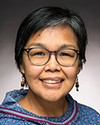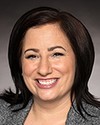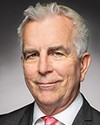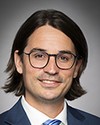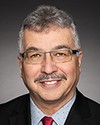That's perfect. Thanks.
To use an example of one of the more unique business models that we currently have as an organization—and we're on the brink of hopefully securing some major renewable energy projects in Saskatchewan—we've built a limited partnership model that allows us to help lead, as FHQ Developments, the negotiations with our partners. Our partners are willing to give up 50% equity in these major projects. These are $500-million and $750-million projects, and they're willing to give us that equity position. Alongside that, it means that we do have to spend a great deal of time accessing the CIB, talking to NRCan and all of the set-asides that have been set up in those programs for us to access.
We have negotiated with our partners to give us access to further equity capital, and the intent here is that we now have a seat at the table. Once we have a seat at the table, we can dictate policy from a board level and now be able to say what are the economic impacts we want to see from these projects: how we want to see employment, how we want to see reinvestment and how we want to see the spend with indigenous businesses—real spend with indigenous businesses—and make sure that we set the policies on how we do that.
Only through having a major equity stake in these major assets are we going to be able to dictate the rules of the game. This would give us—indigenous communities—more power to be able to ensure that there is greater economic impact and that we are a bit more involved in the projects, and that we are building capacity and managing the maintenance of those assets, so that it's not just one big project and we get to see all this tremendous benefit and then it goes away, right?
We want to be able to continue to see that success and the maintenance of those assets ongoing. Being a part of these types of projects, especially major assets, is multi-generational wealth. On an asset for a wind turbine or a solar project, you're looking at anywhere from 25 to 40 years. That could be up to 40 years of wealth generation in cash flow going back to our communities as own-source revenue that can be used for further investment in the things we need in our communities.
That's just an example of how we've deployed a new business model to help us access capital and to see that there is multi-generational wealth. We're crossing our fingers and hoping for access to some of these projects and that they will be approved for us.

